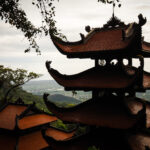Nakhon Phanom is a city located in Thailand’s Northeastern region, nestled on the picturesque banks of the Mekong River. It is the capital of Nakhon Phanom Province and a key commercial centre in the region, but it also offers plenty of attractions that make it a great destination for tourists. The city is known for its colourful temple Wat Phra That Phanom and it is also the home of the Royal Thai Air Force.
Nakhon Phanom’s nickname is the ‘City of Mountains’ even though the area there is quite flat and the only limestone mountains lie actually across the river in Laos.

During the Vietnam War, the city served as a major staging point for the U.S. military, which supplied equipment to the Royal Lao Army and the South Vietnamese forces.
There are not many must-see places to visit, however, it was a perfect overnight stop on my nearly two-week road trip around Isaan. I simply love the Mekong River and Nakhon Phanom has a long promenade and cycle lane to explore its banks.
How to get there?
You can travel to Nakhon Phanom in Thailand by either road or air. If you are travelling by road, the nearest cities to Nakhon Phanom are Udon Thani (128 km) and Korat (241 km). The drive from Udon Thani takes about 2 hours and the drive from Korat takes about 3 and a half hours. You can travel by your private vehicle or you can take a bus from the bus station in either city. If you are travelling by air, the nearest airport to Nakhon Phanom is Nakhon Phanom Airport (KOP) which is just 3 km from the city centre. You can fly to this airport from various cities in Thailand including Bangkok, Chiang Mai, and Udon Thani.
You may check your connections at 123Go.Asia
When to go?
The city can be visited at any time of the year. The dry season runs from November to March. During this time, the weather is generally mild, sunny, relatively dry, and with less humidity.
I visited this region in May and unfortunately, it wasn’t the best experience as it was scorching hot and most of the waterfalls dried up.

Where to stay?
I stayed at SP Residence and the room was big enough with plenty of parking space in front of the hotel. The air conditioning didn’t work perfectly well but was still good value for money.
What to see?
Naga Monument
A huge brass Naga serpent monument along the Mekong River was built in 2016 and today it’s a favourite place for locals to drop by for prayer and to make merits, or simply to hang around on the nice promenade there.

Wat Mahathat
A beautiful temple which is characterized by an elaborately decorated spire. Just follow the promenade along the Mekong River southwards from the Naga Monument for about 10 minutes and the temple will be on the right side.

Nakhon Phanom Walking Street
A great and lively place for strolling along the Mekong River, especially at sunset or in the evening. There are some food stalls in case you get hungry.

The Vietnamese Memorial Clock Tower
The tower was built by Vietnamese artisans and given to Nakhon Phanom residents on the event of their return to their homeland in 1960, as a sign of gratitude to Thai people who provided them with shelter during the Indochina War.
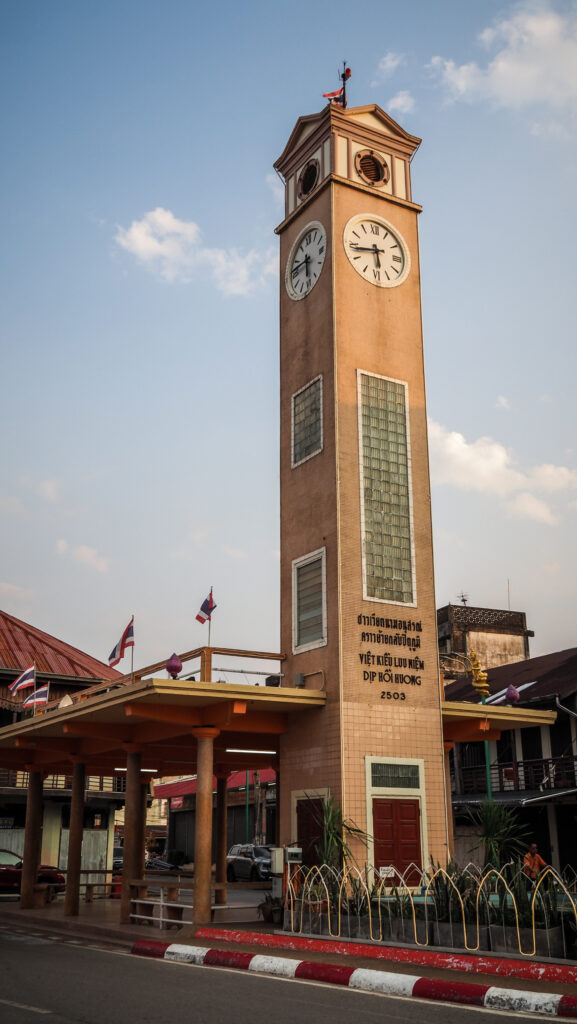
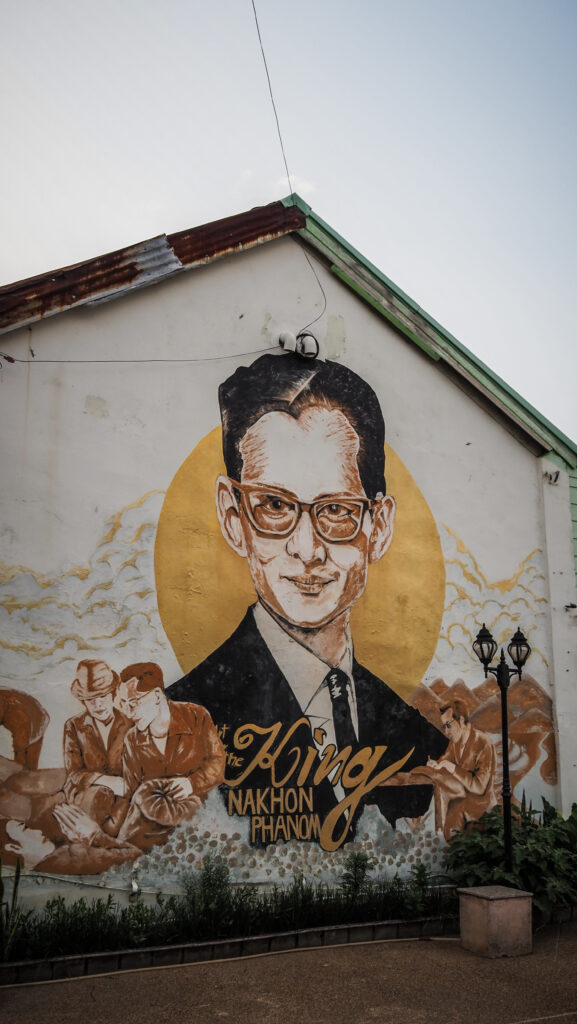

Wat Okat
It is considered the most important temple in Nakhon Phanom, with the twin Buddha images of Phra Tio and Phra Thiam which, according to the legend, were floated across the river from Laos.
Saint Anna Nong Saeng Church
A beautiful, peaceful Catholic Church was built in 1926 along the banks of the Mekong River. The catholic faith was first brought to the area by Vietnamese immigrants.
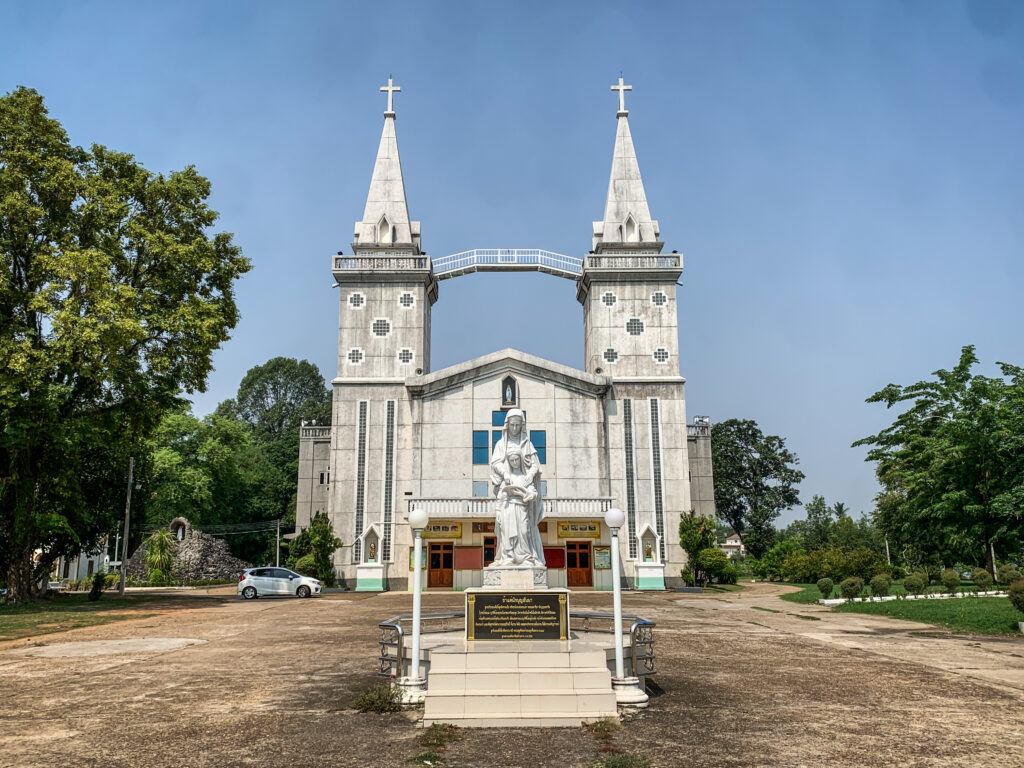
Former Governor’s Residence Museum
Nakhon Phanom Governor’s Residence Complex was built between 1912 – 1914 in Western colonial architecture style. His Majesty King Bhumibol Adulyadej (King Rama IX) and Her Majesty Queen Sirikit spent nights at this complex during the royal visit to northeastern Thailand. Currently, after renovation, it is used as a museum.

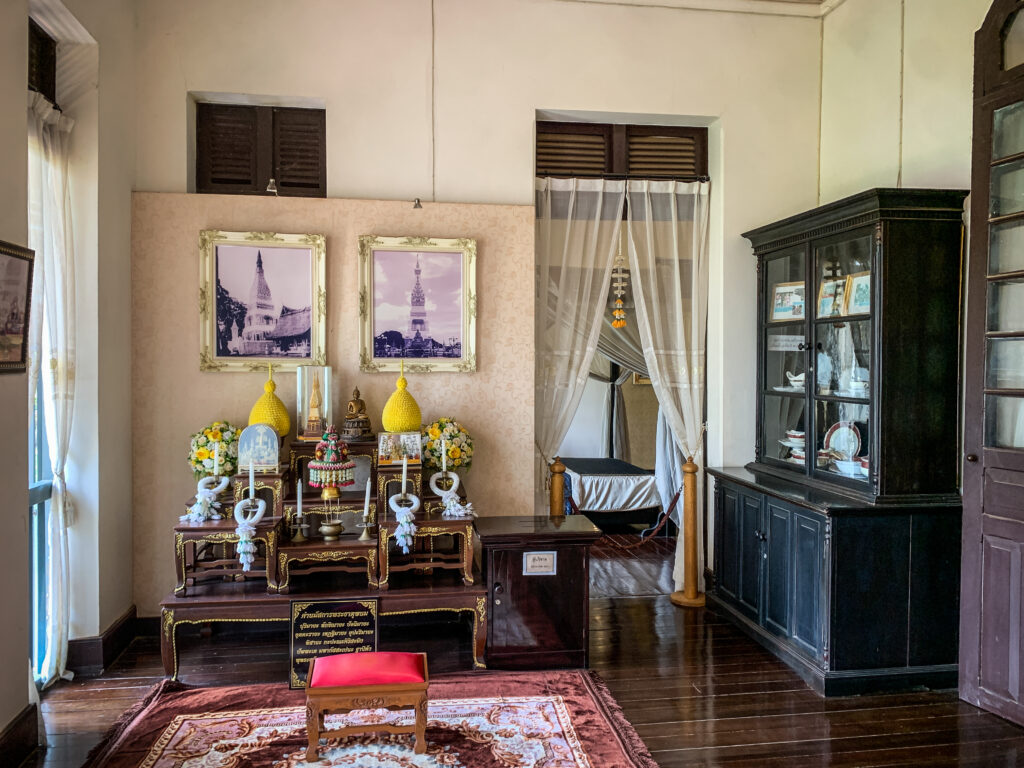
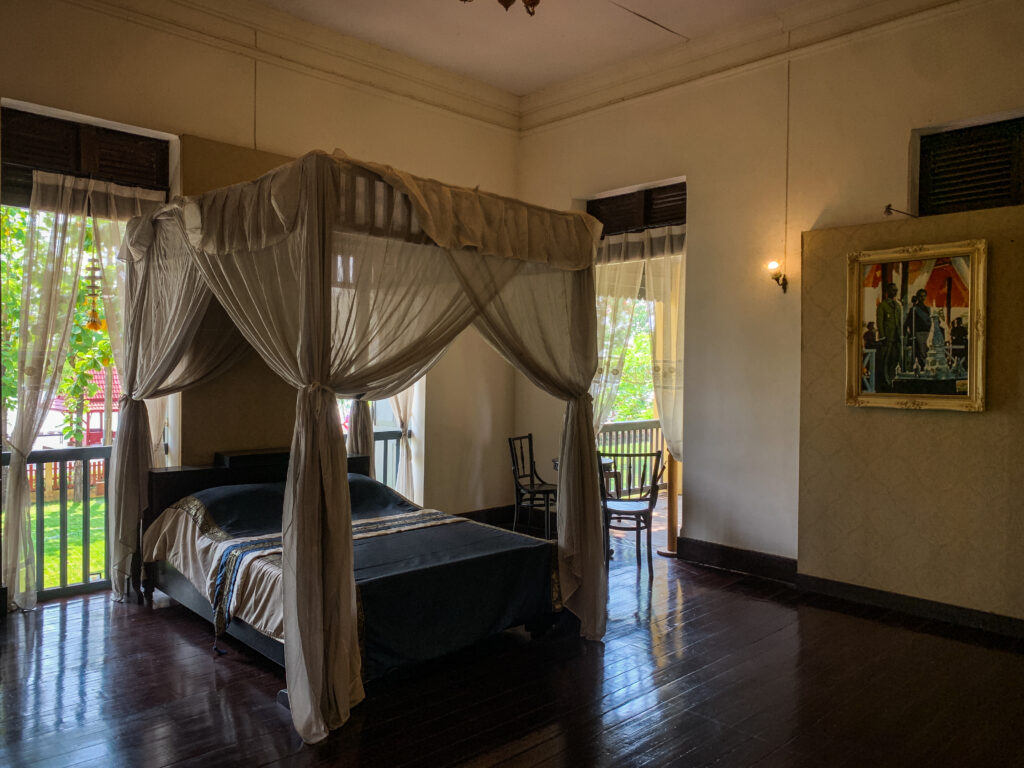
Nakhorn Phanom Courthouse
Pleasant building, beautifully restored. The construction started in 1917 and the opening ceremony followed on April 1st, 1918. In 1950, Thailand had a dispute with Indochina and France, therefore the courthouse was hit by cartridges and bombs causing more than 40 wall crackers. After that, it was repaired and used as the office of Nakhon Phanom Provincial Court until March 3rd 1963, with its basement converted into a jail.

Maekong Underwater World
A small but exciting place to learn about fish species inhabiting the Mekong River. Some of the catfish are really huge and impressive! The aquarium is about 15 minutes drive from the city centre and the entrance ticket costs 30 THB.
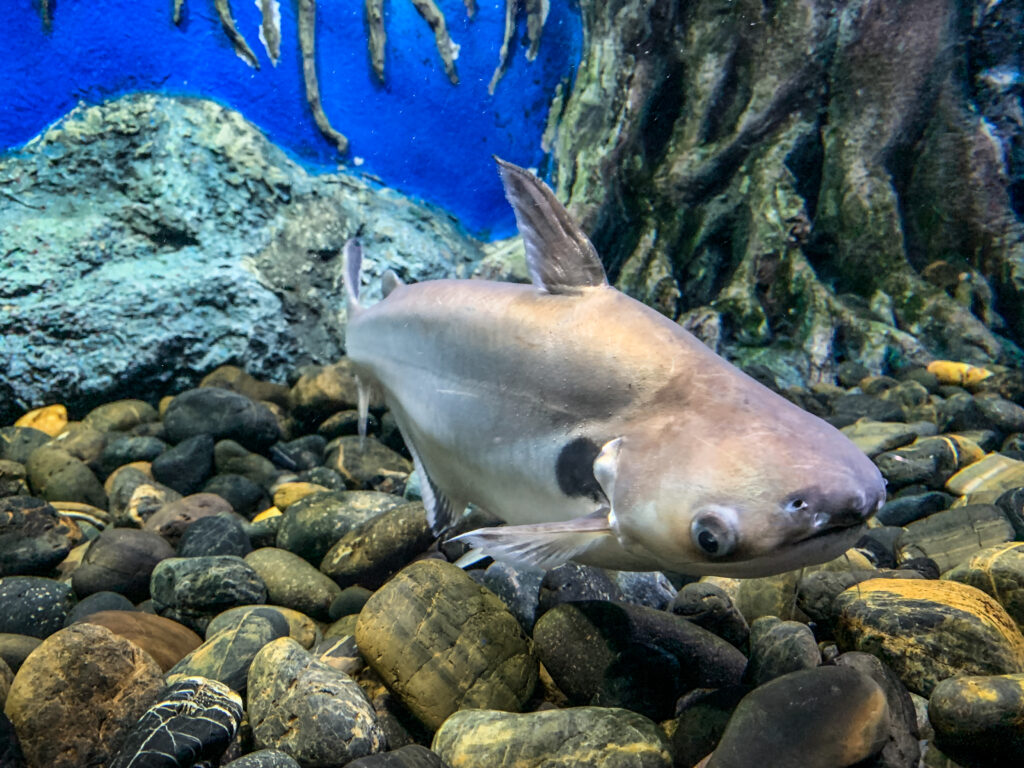
Ho Chi Minh Museum and House
Ho Chi Minh was a revolutionary leader of Vietnam who is considered to be one of the main forces behind the country’s independence. He was a key figure in the Vietnamese revolutionary movement, leading independence groups in their fight against French, Japanese and American oppressors. Ho Chi Minh lived in Baan Na Chok Village during the late 1920s. The one-storey wooden house has some photographs as well as tools and utensils used by Ho Chi Min in his daily life. It’s a nice and quiet place unless the bus with Vietnamese tourists arrives, for who the area is like a pilgrimage site.
About 300 meters away is a museum or rather a replica of the residence, with some additional exhibitions.
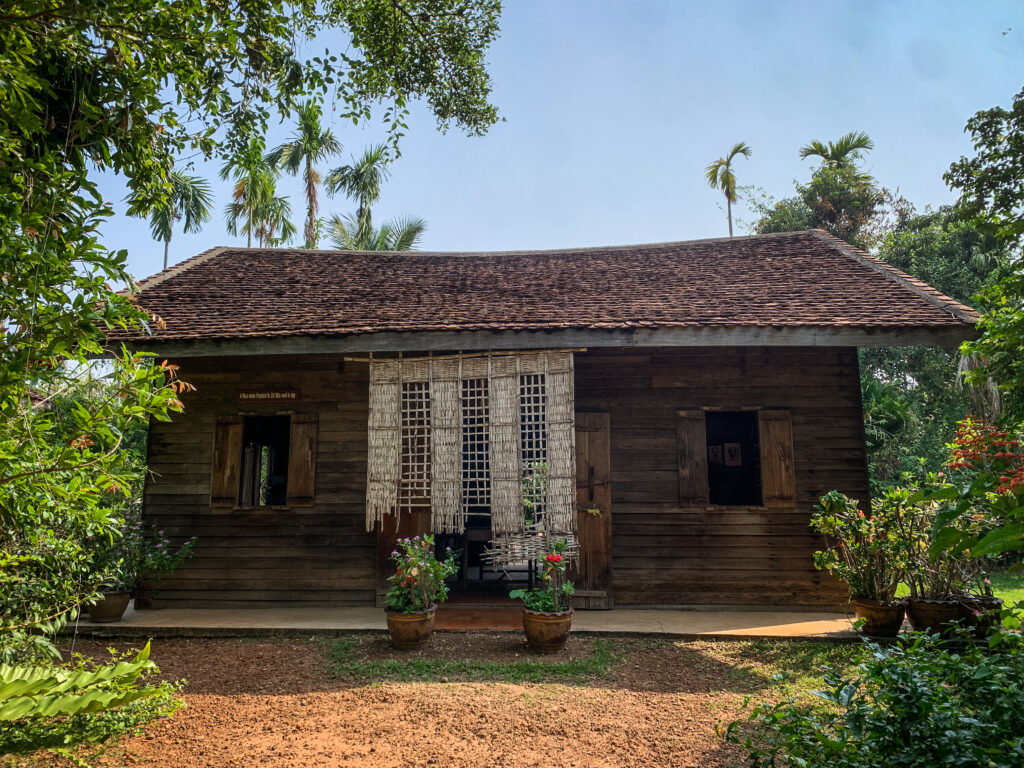
Out of town
Wat Phrathat Phanom Woramahawihan
One of the holiest temples in this region of Thailand. It is believed Buddha’s breast bones are contained inside. Therefore, thousands of people make pilgrimages here, especially during the annual festival. The grounds are busy with photographers and hawkers, so the atmosphere wasn’t my favourite.
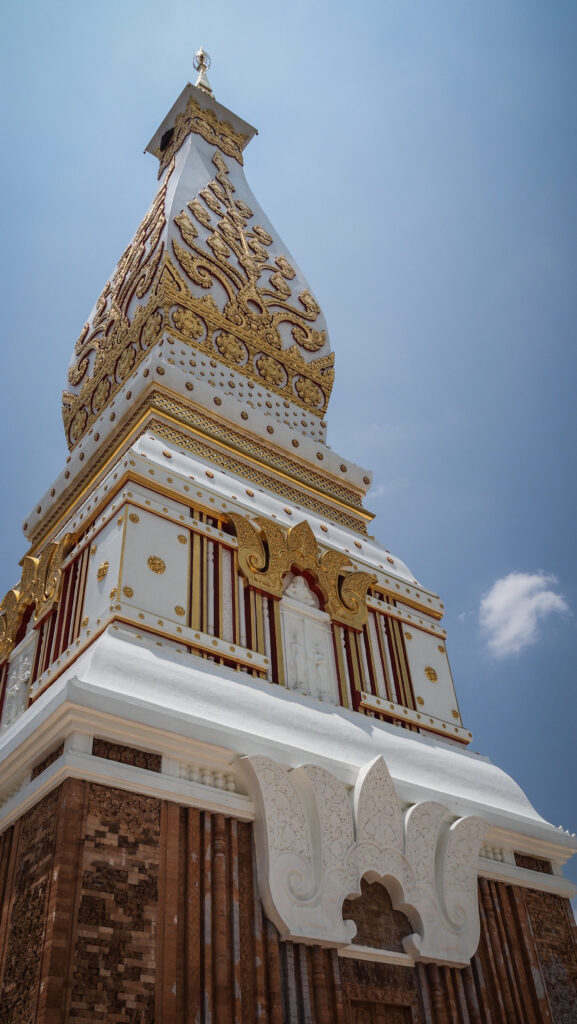



Rueang Aram Ratsada Korn Gate
The arch symbolically connects Wat Phra That Phanom with the Mekong River. The architecture around is in a typical French Indochina style.
Wat That Renu
About 50 km south of the city centre of Nakhon Phanom is this beautiful 36-meter-high chedi named Phra That Renu. It was built in 1918 and represents the Laotian style. The design resembles the much older Wat Phra That Pha described in the previous paragraph. Nearby the temple, you will find a textile market with locally made fabrics and clothes.



